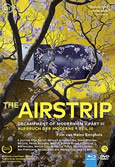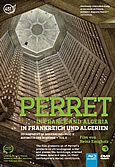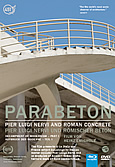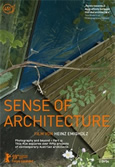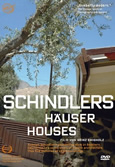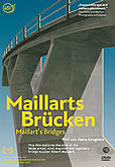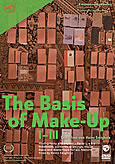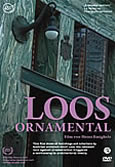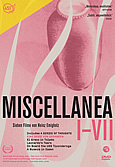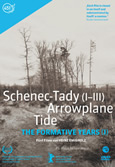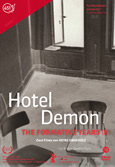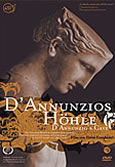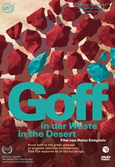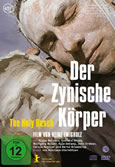The Lobby (76 min) starring John Erdman and filmed in Buenos Aires in October 2019 is ready for release. Old White Male: "There is no Here here." /// Streetscapes-Films by Heinz Emigholz at Festivals in Hongkong, Buenos Aires, NYC, Lissabon ... and at cinemas /// Seven Music Videos for KREIDLER
Retrospectives with films by Heinz Emigholz in Washington, Sao Paulo, Rio de Janeiro and Buenos Aires /// THE AIRSTRIP and LOOS ORNAMENTAL at Siskel Film Center in Chicago /// Q&A Session with Kodwo Eshun in London
Slaughterhouses of Modernity
Film by Heinz Emigholz
GER 2022 – 80 minutes
The actor Stefan Kolosko acts as a diver in the sunken city of Epecuén, where he paraphrases a text by Jorge Luis Borges, and as a curator in Berlin's "Humboldt Forum", where he enumerates the crimes of Wilhelm II.
Mamani in El Alto
Architecture as Autobiography
Photography and beyond – Part 35
The film shows numerous choletts of the Bolivian civil engineer, architect and founder of neo-Andean architecture Freddy Mamani Silvestre.
Salamone, Pampa
Architecture as Autobiography
Photography and beyond – Part 34
Twenty-five buildings by Argentine architect Francisco Salamone (1897-1959)
New: The Lobby (76 min) with John Erdman. "There is no Here here.“ (Old White Male)
A revelation stuffed with every kind of surprise except the ones you expect.
Die letzte Stadt – The Last City (100 min)
with John Erdman, Jonathan Perel, Young Sun Han,
Dorothy Ko, Susanne Sachsse und Laurean Wagner
in Be’erSheva, Athen, Berlin, São Paulo und Hongkong
YEARS OF CONSTRUCTION
Film by Heinz Emigholz
Photography and beyond – Part 29
2013-18, 93 min
DCP, 5.1, kein Dialog
TWO BASILICAS
Film by Heinz Emigholz
Denmark/Germany, 2018, DCP, 16:9, 5.1, 36 Minutes
Photography and beyond – Part 28
Four films by Heinz Emigholz at the Berlinale Forum 2017
THE STREETSCAPES SERIES
Chapter I: 2+2=22 [The Alphabet]
Chapter II: Bickels [Socialism]
Chapter III: Streetscapes [Dialogue]
Chapter IV: Dieste [Uruguay]
![2+2=22 [The Alphabet] 2+2=22 [The Alphabet]](/sites/default/files/filme/streetscapes/poster_2222_2.jpg) 2+2=22 [The Alphabet] – (Germany, 2013-17, 88 min)
2+2=22 [The Alphabet] – (Germany, 2013-17, 88 min)
Filmed in Tiblisi, Georgia. Voice by Natja Brunckhorst. A documentary on the CD-production ABC by Kreidler (Thomas Klein, Alexander Paulick, Andreas Reihse, Detlef Weinrich) plus 26 notebooks by Heinz Emigholz und 26 street scenes.
![Bickels [Socialism] Bickels [Socialism]](/sites/default/files/filme/streetscapes/poster_bickels_0.jpg) Bickels [Socialism] – (Germany/Israel, 2015-17, 92 min)
Bickels [Socialism] – (Germany/Israel, 2015-17, 92 min)
Filmed in São Paulo and Israel. Voice by Galia Bar Or. At the cultural center Casa do Povo in São Paulo a documentary on 22 buildings of Kibbutz-architect Samuel Bickels (1909-1975) is shown. Appendix: The Story of Vio Nova.
![Streetscapes [Dialogue] Streetscapes [Dialogue]](/sites/default/files/filme/streetscapes/poster_streetscapes_0.jpg) Streetscapes [Dialogue] – (Germany, 2015-17, 132 min)
Streetscapes [Dialogue] – (Germany, 2015-17, 132 min)
John Erdman, Jonathan Perel and Natja Brunckhorst in buildings by Julio Vilamajó, Eladio Dieste and Arno Brandlhuber. Feature film written by Heinz Emigholz and Zohar Rubinstein. Filmed in Uruguay and Berlin. A dialogue becomes a film.
![Dieste [Uruguay] Dieste [Uruguay]](/sites/default/files/filme/streetscapes/poster_dieste_0.jpg) Dieste [Uruguay] – (Germany, 2015-17, 95 min)
Dieste [Uruguay] – (Germany, 2015-17, 95 min)
Filmed in Uruguay and Spain. A documentary on 29 buildings by the Uruguayan master-builder Eladio Dieste (1917-2000). Prologue: three buildings from the 1930’s by Julio Vilamajó in Montevideo.
THE MEADOW OF THINGS (Die Wiese der Sachen)
Heinz Emigholz, D 1974-87, 88 min
“To whom in love of Nature holds communion with her visible forms, she speaks of a various language.“ William Cullen Bryant
Le Corbusier [|||||] Asger Jorn [Relief]
Film by Heinz Emigholz
The film contrasts the "Villa Savoye", built by Le Corbusier in 1931, and Asger Jorn’s "Grand Relief", built in 1959.
Le Corbusier [IIIII] Asger Jorn [Relief] contrasts the Villa Savoye, built by Le Corbusier in 1931, and Asger Jorn’s Grand Relief, which the Danish painter and sculptor produced in 1959 for the Århus Statsgymnasium. The film makes connections between what does not belong together, at least not according to the ideological stipulations of their creators.
Two Museums
Film by Heinz Emigholz
The film juxtaposes/compares two museums: The Museum of Art, Ein Harod, Israel, which Samuel Bickels (1909-1975) built there in 1948, and The Menil Collection in Houston, Texas, built by Renzo Piano (b. 1937) 1986 . The method of natural lighting in Bickels‘s construction was the direct model for Piano, who adopted for his construction at the request of its patroness Dominique de Menil.
The shooting of the film TWO MUSEUMS / TWO MUSEUMS took place in March 2012 in Houston, Texas, and in May 2012 in Ein Harod, Israel.
The Airstrip
Photography and beyond – Part 21 / Decampment of Modernism – Part III
Heinz Emigholz, D 2013, 108 Minutes
I am imagining an air space into which a bomb has been dropped which has not yet reached it's ground zero. It is flying towards that point and cannot be stopped anymore. And then I ask myself what kind of a time that is existing between the dropping and the explosion of that bomb. It is neither the future because the enevitable destruction has yet not taken place, nor is it the past, because is definetely going to be destroyed in an instant. The flight time of the bomb describes an absolute nothingness, a zero hour, consisting of all possibilities that will not exist anymore in the next moment. A story that will cease before it has begun and that I sullenly have to tell. More...
Press Downloads
The Airstrip (Stills)
"This gloriously controlled study of the work of French architect Auguste Perret ... re-creates the tension between the ultrarational and the subtly exuberant in the architect's best work." (Best of 2012, ARTFORUM)
Premiere in Locarno 2012. Screenings at TIFF, VIFF, VIENNALE 2012, MoMA DF 2013:
Perret in France und Algeria
Decampment of Modernism – Part II / Photography and beyond – Part 20
Heinz Emigholz, D 2012, 110 min
The film PERRET IN FRANCE AND ALGERIA presents thirty buildings and architectural ensembles of the French architects and construction engineers Auguste and Gustave Perret. Auguste Perret (1874-1954) has masterfully refined concrete construction in the implementation of his projects and instilled in them a classical expression.
Press Downloads
Perret (Stills) / Presse-PDF
"All architecture is what you do to it when you look upon it." (Walt Whitman)
Parabeton - Pier Luige Nervi and Roman Concrete
Decampment of Modernism – Part I / Photography and beyond – Part 19
Heinz Emigholz, D 2011, 100 min
PARABETON presents seventeen, in Italy and France still extant buildings by the Italian civil engineer Pier Luigi Nervi (1891-1979). The Romans invented liquid rock, also known as concrete. Nervi shaped concrete in such an ingenious way that he can be called the Architect‘s Architect of the 20th Century. The film shows his buildings in connection with ten examples of Ancient Roman architecture made of Opus caementitium. More...
Press Downloads
Parabeton (Stills) / Flyer / Berlinale Catalog
"The dead are disturbing."
After its' premiere at BERLINALE 2011 and several festival screenings A Series of Thoughts was released on the DVD MISCELLANEA I–VII by FILMGALERIE 451:
A Series Of Thoughts
Four Films by Heinz Emigholz
1986-2010, HD, color and b/w, 91 min
EL GRECO IN TOLEDO, LEONARDO'S TEARS, ON BOARD THE USS TICONDEROGA and A MUSEUM IN ESSEN
Press Downloads
Download Stills / Flyer
The Formative Years
Extended Version
Ten films (1972–2004) by Heinz Emigholz
SCHENEC-TADY I (1972/73, 16mm, silent)
SCHENEC-TADY II (1973, 16mm, silent)
ARROWPLANE (1973/74, 16mm, silent)
TIDE (1974, 16mm, silent)
SCHENEC-TADY III (1973/75, 16mm, silent)
HOTEL (1975/76, 16mm, silent and sound)
DEMON (1976/77, 16mm, sound)
THE BASIS OF MAKE-UP I-III (1974-2004, 35mm, sound)
All 16mm-films of THE FORMATIVE YEARS are in the Collection of the Austrian Filmmuseum in Vienna.
Press Downloads
The Formative Years in NYC
A Scene Near Schenec-Tady
Heinz Emigholz
From the beginning to the middle of the seventies, I produced a series of films containing a complicated interplay between abstract temporal compositions–that is, film movements–and selected urban and rural landscapes.
The films–ARROWPLANE, TIDE, and three episodes of SCHENEC-TADY–range in time from 19 to 40 minutes and consist of thousands of photographs, taken frame-by-frame with a Bolex camera on 16mm film according to a previously established score. The camera’s position was precisely chosen. Markings on the tripod and on the camera’s zoom lens allowed me to determine all the possible shots from this position in a system of coordinates. Before shooting the films, scores were written into this system–compositions for images to be photographed individually, which would then create a particular film event when they were projected later. I take the following description of the score from a letter to Birgit Hein from January 31, 1977, which I wrote in preparation for an installation of my films at documenta 6:
Drawing (237) from THE BASIS OF MAKE-UP
"A Roman floor mosaic from the year 500 AD in present-day Istanbul: a lion fighting with an elephant. That's how one would prefer nature and its participants, having them eliminate themselves. Ah, and with what outstanding intelligence man hunts animals and keeps them captive. Five men dream of it on hot marble slabs in the Cemberlitas Hammam of 1584. Their association engines are running at full speed and producing chimeras of naked Chinese recruits whose legs they can pull: from a low-wage country to imported luxury limousines. An old saying already knew that dreams are piles of shit that tell stories. That's their nature; they stem from the digestive tract. You have to wake up so that they won't kill you, and fall asleep again when the scum of the real can no longer be endured. In between, the happiness of a second, the little death and volatile forgetfulness. The first comment of extraterrestrials in face of our uninhabited planet: 'That must have been love.'" (From: Schwarze Blöcke, SchwarzHandPresse 2010).
(1999)
DIE BASIS DES MAKE-UP, 604 drawings by Heinz Emigholz, artist book for exhibition at HAMBURGER BAHNHOF 2008, 608 pages, € 30 /// Catalogue MUSEUM FÜR GEGENWART No. 11 – HEINZ EMIGHOLZ with essays by Eugen Blume, Art Spiegelman, Hartmut Bitomsky, Hanne Loreck, Stefan Ripplinger, Marc Ries, Donatella Chiancone-Schneider and Frieda Grafe, 56 pages, € 10 EURO
The second station of Counter Gravity exhibition will be opened at september 14 in the Techne Sphere Leipzig.
Oct 15, 2021 - Jan 3, 2022
COUNTER GRAVITY
The Films of Heinz Emigholz
Monographic show and publication, Screenings and conversations
A pioneer of experimental architectural and narrative film: Since the 1970s, Heinz Emigholz has used a unique cinematic formal language to explore the relationship between film time and spatial experience, remembrance structure and consciousness. In his work, the filmmaker, artist, author and producer radically departs from conventional representations of space, creating an alternative history of modern architecture. Website HKW
Selected Exhibitions
- 1974. Projekt '74, Cologne
- 1977. documenta 6, Kassel
- 1977/78. Film As Film, Kunstverein Cologne, Hayward Gallery, London
- 1982. Normalsatz (Ordinary Sentence), Buch Handlung Welt, Hamburg
- 1986. Ich hätte auch gern einen Körper gehabt (I would have liked to have a body, too), Galerie Eisenbahnstraße, Berlin
- 1988. Der Untergang der Bismarck (The Sinking of the Bismarck), Zwinger Galerie, Berlin
- 1988/89. BiNationale – German Art of the Late '80s, Düsseldorf / Boston / Minneapolis / Houston
- 1989. Seit ich blond bin, färbe ich mir die Haare (Since I am blonde, I dye my hair), Zwinger Galerie, Berlin, und XPO Galerie, Hamburg
- 1991. Krieg der Augen, Kreuz der Sinne – Skizze (War of Eyes, Cross of Senses – Sketch), Galerie Martin Schmitz, Kassel
- 1991. Plakate (Posters), Zwinger Galerie, Berlin
- 1991. Die Erschöpfung – Enzyklopädie (The Exhaustion – Encyclopaedia), Kunsthalle Bremerhaven
- 1992. Zwei Essays – Filmphotographie/Photographie (Two Essays – Cinematography/Photography), Galerie Fischinger, Stuttgart
- 1992. Photographie und jenseits, Künstlerhaus Bethanien, Berlin
- 1993. Seit Freud gesagt hat, der Künstler heile seine Neurosen selbst, heilen die Künstler ihre Neurosen selbst (Since Freud Said That The Artist Heals His Neuroses Himself, Artists Have Been Healing Their Neuroses Themselves: Drawings, Texts, Films. Saarländisches Künstlerhaus, Saarbrücken
- 1994. Drawings and Posters, Goethe Institut, Madrid
- 1994. Die Basis des Make-Up (1974-1994), Hamburger Kunsthalle
- 1994. Depot, Galerie Martin Schmitz, Kassel
- 1997. In medias res – Media Art from Berlin in Istanbul. Dolmabahce Palast, Istanbul
- 1998. Die Basis des Make-Up (1974-98), Zwinger Galerie, Berlin
- 1999. das xx. jahrhundert – ein jahrhundert kunst in deutschland. Hamburger Bahnhof – Museum für Gegenwart, Berlin
- 2000. Die Basis des Make-Up (1974-2000), Galerie argos, Brüssel
- 2001. Die Basis des Make-Up (1974-2001), Kunstverein München
- 2001. Die Basis des Make-Up, Galerie Hubert Bächler, Zurich
- 2006. Research for Basis des Make-Up, Zwinger Galerie, Berlin
- 2004. Heinz Emigholz / Michael Snow, Goethe Institut, Toronto
- 2007. Die Basis des Make-Up (1974-2007), Hamburger Bahnhof – Museum für Gegenwart, Berlin
- 2008. Neue Schwarze Blöcke (New Black Blocks), Galerie Hubert Bächler, Zurich
- 2008. Sense of Architecture, Architekturbiennale, Venice
- 2010. Die gezeichnete Welt (The Drawn World), Kunstverein Ingolstadt
- 2010/11. Je mehr ich zeichne (The More I Draw) – Zeichnung als Weltentwurf, Museum für Gegenwartskunst Siegen
- 2010. The Formative Years – Extended Version, Extra City, Antwerpen
- 2010. Photography and beyond – Three Films, Installation. Petach Tikva Museum, Tel Aviv
- 2011. A Series of Thoughts – Four Films, Installation. Zwinger Gallery, Berlin
- 2011. Einrichten – Photographs. Zwinger Gallery, Berlin
- 2011. The Formative Years – Seven Films, Installation. Wyoming Building, NYC
- 2012. Utopie Gesamtkunstwerk. 21er Haus, Vienna
- 2015. What Moves Us. Museum Jorn, Silkeborg
- 2015. The Dialogic City – Berlin wird Berlin. Berlinische Galerie, Berlin
- 2016. Rohschnitt Dieste. gkg, Bonn
- 2021. Counter Gravity. The films by Heinz Emigholz. HKW, Berlin


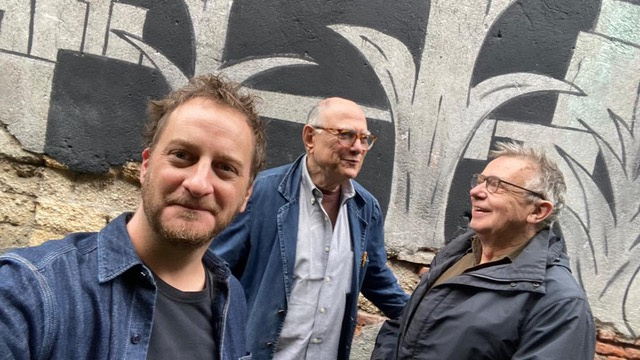
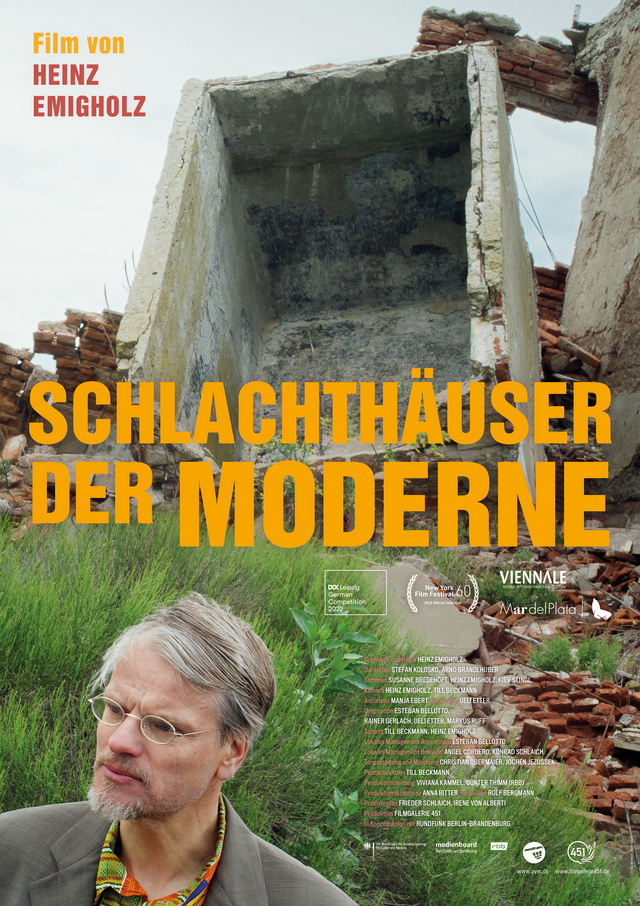


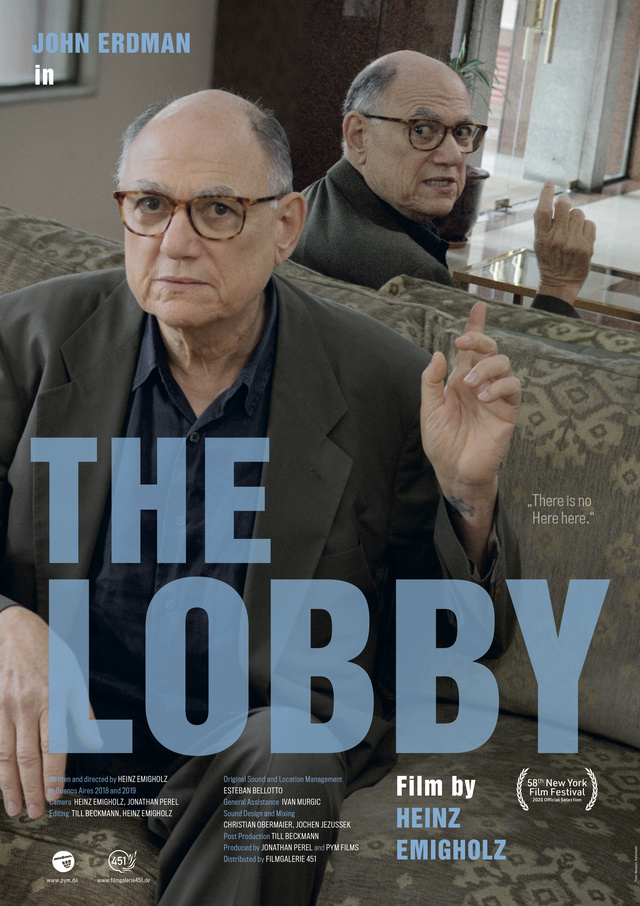
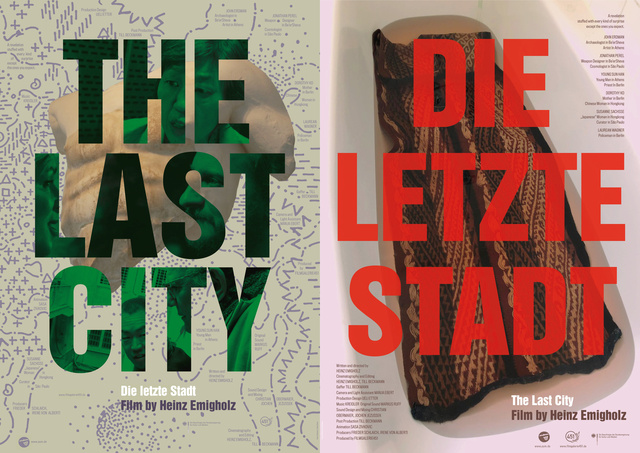


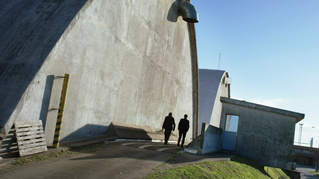
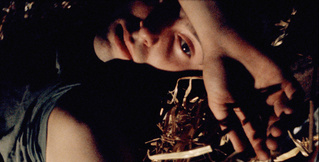







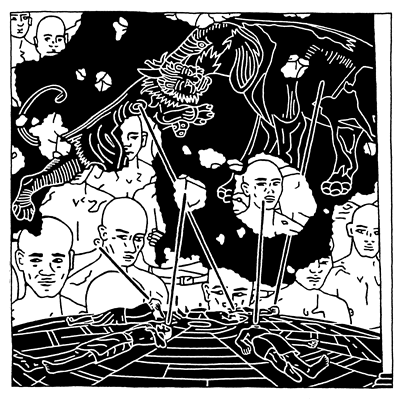
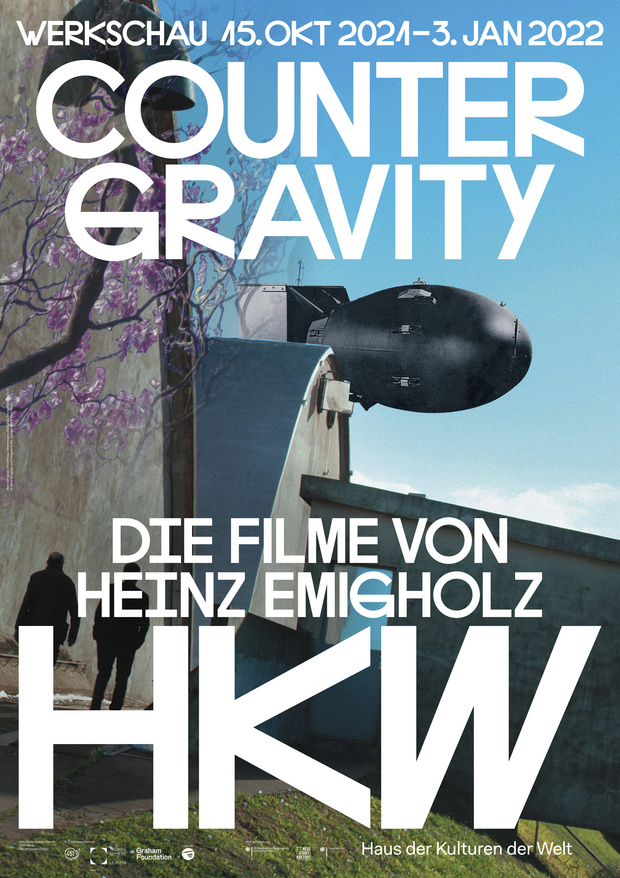


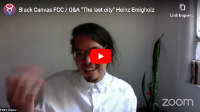
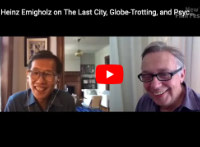

![HKIFF 2017 Q&A: Streetscapes [Dialogue] Q&A HKIFF 2017](/sites/default/files/hkiff_2017_yt.jpg)
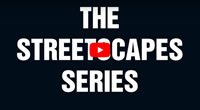
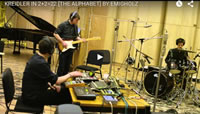

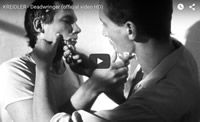
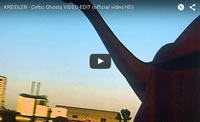




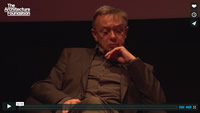
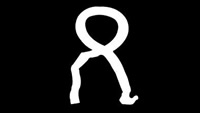
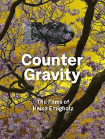
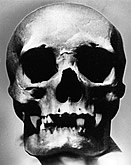
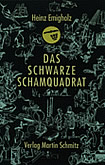
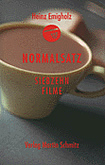

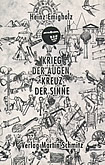
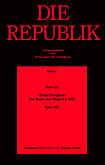
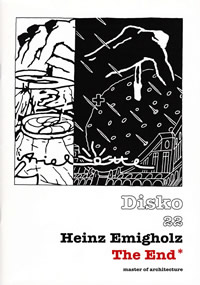
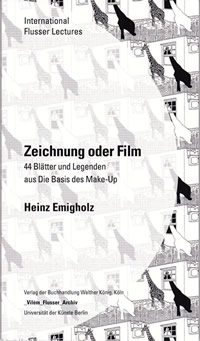
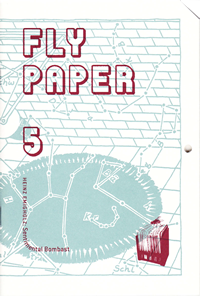
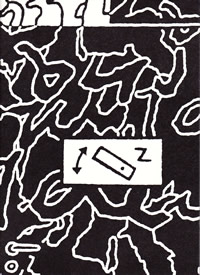
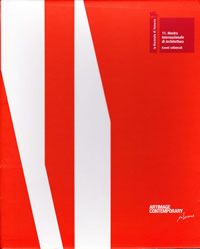
![2+2=22 [THE ALPHABET] 2+2=22 [THE ALPHABET]](/sites/default/files/banners/451-streetscapes_1.jpg)
![Bickels [SOCIALISM] Bickels [SOCIALISM]](/sites/default/files/banners/451-streetscapes_2.jpg)
![Streetscapes [DIALOGUE] Streetscapes [DIALOGUE]](/sites/default/files/banners/451-streetscapes_3.jpg)
![DIESTE [URUGUAY] DIESTE [URUGUAY]](/sites/default/files/banners/451-streetscapes_4.jpg)
